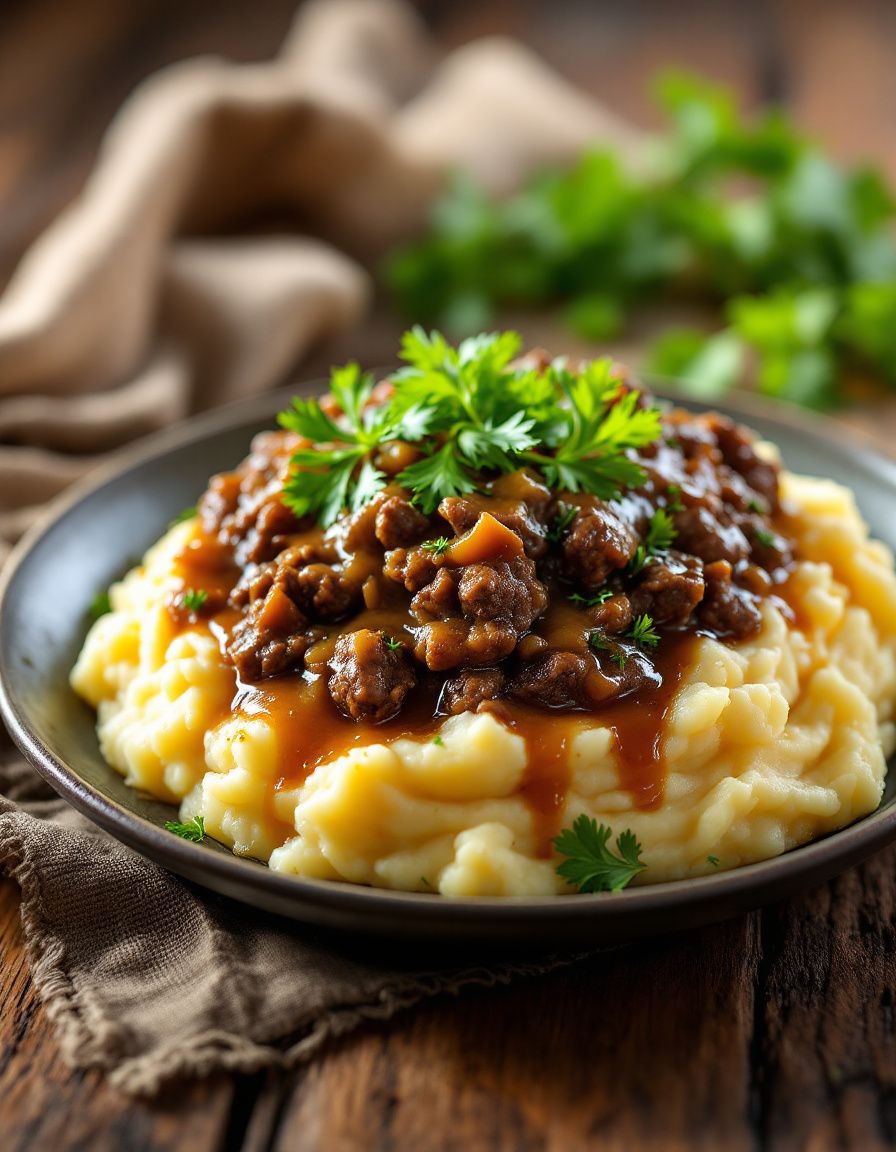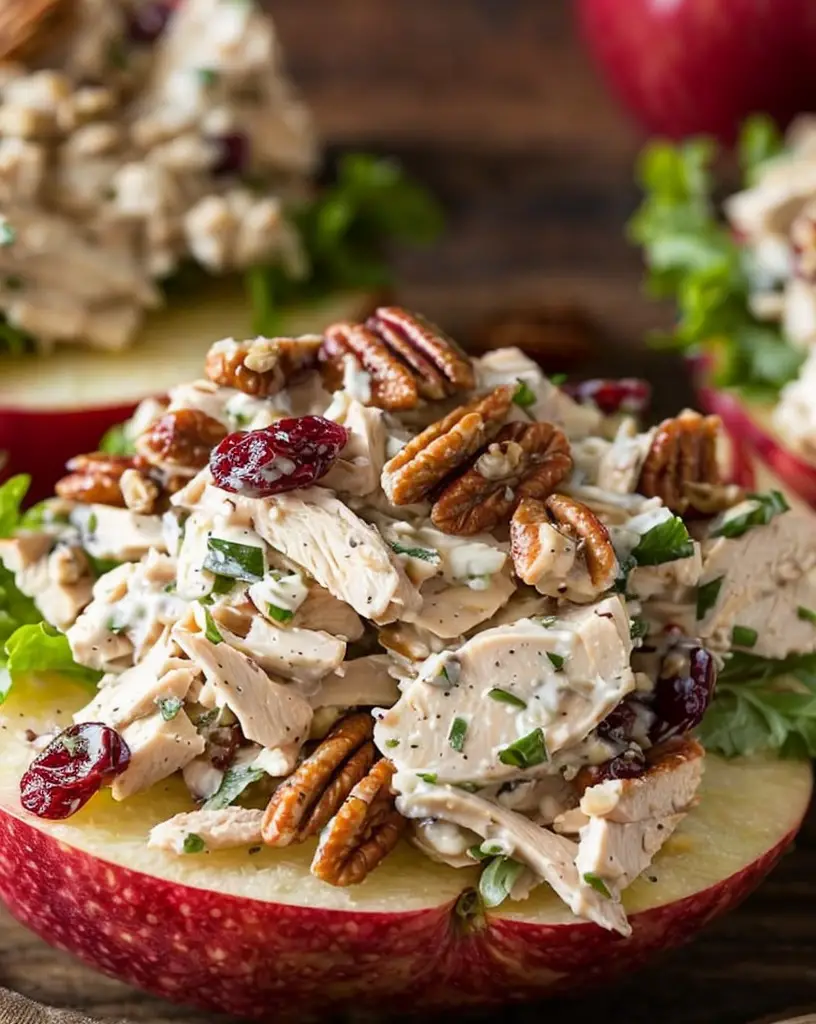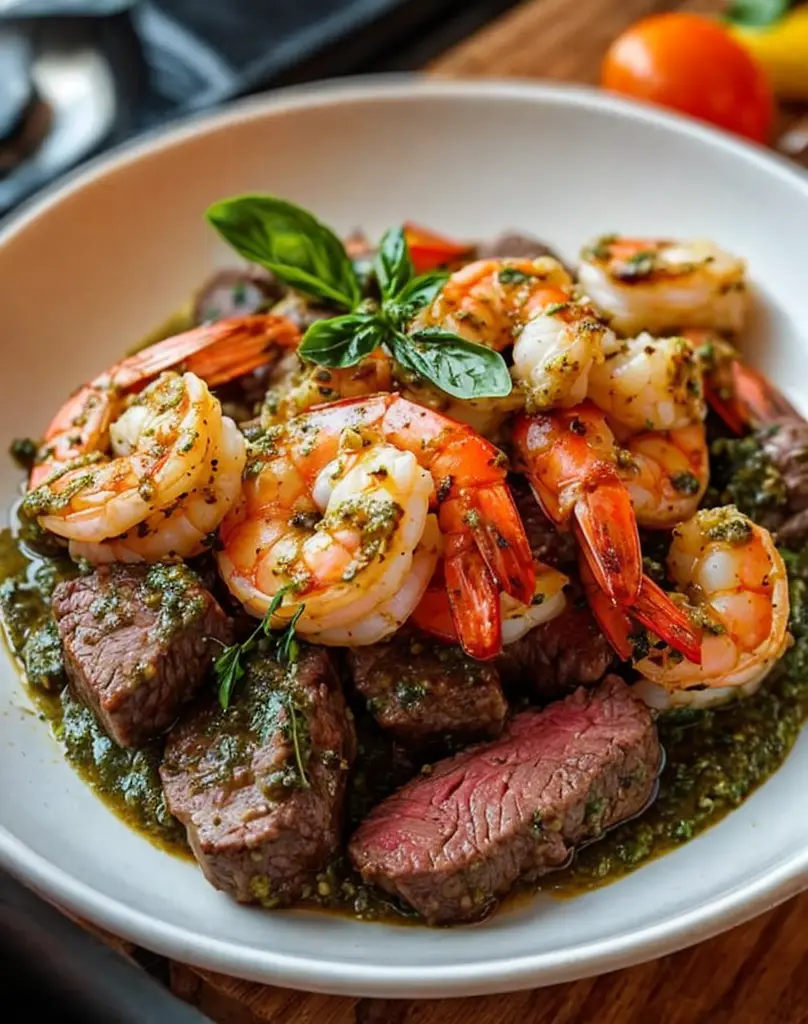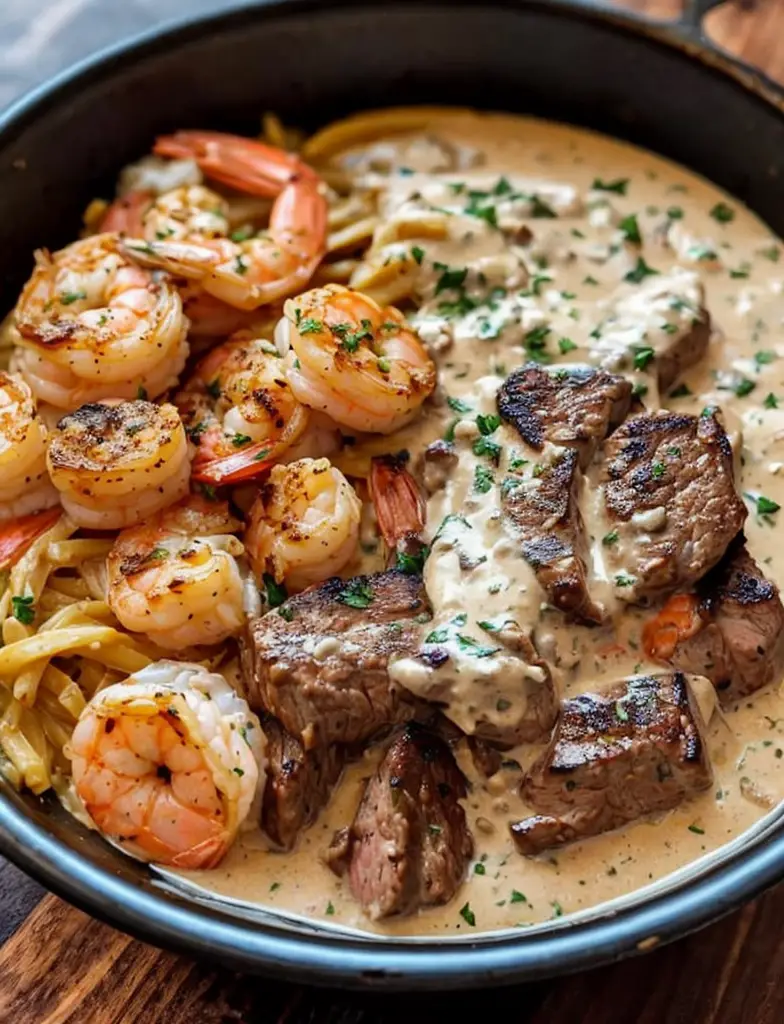Creamy Honey Pepper Chicken Mac and Cheese Delight: A Comfort Food Extravaganza
Creamy Honey Pepper Chicken Mac and Cheese Delight is more than just a meal; it’s a warm embrace in a bowl. Imagine the richness of creamy, cheesy pasta complemented by tender pieces of chicken that are infused with a sweet and spicy honey pepper sauce. The result is a flavor profile that dances on your palate, making it the ideal comfort food for any occasion. Whether it’s a hectic weeknight dinner or a family gathering, this dish brings people together in a heartwarming culinary experience.
The magic of this recipe lies in its simplicity and depth of flavor. As you dig into the mac and cheese, the creamy texture envelops the robust chicken, while the honey pepper blend adds an unexpected kick that entices the senses. Each bite reveals the harmonious balance between sweetness and spice, creating an unforgettable synergy that elevates traditional mac and cheese to new heights.
Quick Recipe Highlights
- Flavor Profile: The creamy cheese base harmonizes beautifully with the honey and pepper, resulting in a meal that is both comforting and exciting.
- Texture: The richness of the macaroni coupled with the tenderness of the chicken creates a pleasing mouthfeel that is creamy, chewy, and delightful.
- Aroma: You’ll fall in love with the enticing aroma of melting cheese intertwined with hints of sweetness from honey and the punch of black pepper.
- Visual Appeal: A melty, golden cheese topping over a bed of pasta and chicken creates a visually satisfying dish that’s sure to impress.
- Skill Level Needed: This is an easy recipe that requires basic cooking skills, perfect for both novice cooks and seasoned chefs looking for a quick meal.
- Special Equipment: A large pot for boiling pasta and a skillet for preparing the chicken are all you need to whip up this delicious dish.
Recipe Overview
- Difficulty Level: While the process is straightforward, attention to detail is essential. This dish is perfect for beginners, allowing for growth in cooking skills without overwhelming complexity.
- Category: This recipe fits perfectly into the comfort food category, making it a beloved choice for family dinners or casual gatherings.
- Cuisine: With roots in American cooking, this dish fuses elements from classic southern comfort foods, adding a unique twist with the honey and pepper flavors.
- Cost: Ingredients needed for this recipe are quite economical, making it budget-friendly for most households.
- Season: Ideal for any season, Creamy Honey Pepper Chicken Mac and Cheese Delight shines during colder months, warming hearts and bellies alike.
- Occasion: Perfect for gatherings, potlucks, or family dinners, this dish brings joy to any meal and prompts happy conversations around the table.
Why You’ll Love This Recipe
You’ll fall head over heels for the incredible taste and texture of Creamy Honey Pepper Chicken Mac and Cheese Delight. The sumptuous blend of cheeses envelops each bite, while the honey pepper chicken provides an exciting burst of flavor that transforms a mundane dish into a gourmet experience. This dish manages to be rich yet balanced, making it a satisfying meal any night of the week.
Convenience is another key factor; this recipe does not require long hours in the kitchen or complex techniques. With a prep time of just 15 minutes and a cook time of 30 minutes, you’ll have a homemade gourmet meal on the table in no time. Both kids and adults love it, making it a go-to recipe for busy families who need quick yet delectable dinner options.
Nutrition-wise, this dish provides a solid balance of protein, carbs, and fats, making it a well-rounded meal. The chicken offers lean protein, while the pasta serves as a hearty carbohydrate source. You can also customize the ingredients to incorporate veggies or whole-grain pasta, enhancing its nutritional value.
Social and entertaining value is another highlight of this dish. Whether hosting friends for a movie night or celebrating an occasion, Creamy Honey Pepper Chicken Mac and Cheese Delight serves as a fantastic centerpiece for any gathering. Its warm and inviting aromas make your home feel welcoming and cozy, encouraging guests to linger longer and engage in delightful conversation.
Lastly, the cost-effectiveness of this recipe cannot be overlooked. Using affordable ingredients, you can feed a family of four without breaking the bank. Plus, the leftovers make for fantastic lunch options, stretching your dollar even further.
Historical Background and Cultural Significance
Creamy Honey Pepper Chicken Mac and Cheese Delight has roots that tap into the heart of American comfort food. Macaroni and cheese itself has been a staple in American kitchens since the late 1700s, evolving with each generation while maintaining its status as a beloved dish. The incorporation of honey and black pepper adds a modern twist to this classic, showcasing how culinary traditions can be reimagined.
This dish carries cultural importance as a reminder of home cooking. For many families, mac and cheese represents warmth, togetherness, and the joy of sharing meals. It has been passed down through generations, each adding their unique spin to the original recipe. By integrating flavors like honey and pepper, it highlights how traditional foods can adapt to modern palates.
The evolution of this recipe speaks to the broader culinary trends of blending unique flavors into traditional fare. Chefs are increasingly experimenting with unconventional pairings, as seen in this recipe that elegantly marries sweetness and spice with comfort. These flavor profiles reflect the diversity of American cuisine, where various influences converge to create something distinctly innovative.
Regional variations of mac and cheese also play a significant role in this dish. Southern-style versions often incorporate rich cheeses and breadcrumbs, while the Midwest might offer a simpler rendition. By adding chicken and a sweet sauce, this recipe becomes a delicious fusion of these influences, resonating with food enthusiasts across different American regions.
Ingredient Deep Dive
**Macaroni Pasta**
Macaroni has a rich history, having been popularized in the United States during the 18th century. It’s a versatile pasta type, often used in comfort dishes. Nutritionally, it provides carbohydrates essential for energy. When selecting macaroni, look for high-quality brands that ensure uniform cooking. Store it in a cool, dry place, and consider whole grain options for added health benefits.
**Cheddar Cheese**
Cheddar cheese, originating from England, has become a staple in American kitchens. It’s known for its sharp flavor and excellent melting qualities. Cheddar is a good source of calcium and protein, making it a nutritious addition to any meal. Choose block cheddar over pre-shredded for the best melt. Store it wrapped in parchment paper in the fridge to maintain freshness.
**Chicken Breast**
Chicken breast is prized for its lean protein content and versatility. It can be seasoned or marinated in numerous ways, offering a world of flavor possibilities. Chicken is low in fat and rich in B vitamins, making it a nutritious choice for many diets. When selecting chicken breasts, look for ones that feel plump with a pink hue. Store raw chicken in the refrigerator and consume it within a few days or freeze for later use.
**Honey**
Honey has been valued since ancient times for its natural sweetness and medicinal properties. Rich in antioxidants and nutrients, adding honey enhances both flavor and health. Select raw or local honey for superior taste and health benefits. Honey should be stored at room temperature in a sealed container to maintain its consistency.
**Black Pepper**
The use of black pepper can be traced back thousands of years, often regarded as the “king of spices.” It’s known for its antioxidants and metabolism-boosting properties. Choose whole peppercorns to grind fresh for optimal flavor. Store black pepper in an airtight container in a cool, dark place to preserve its spiciness.
Common Mistakes to Avoid
- Overcooking the pasta can lead to a mushy texture. Always test for al dente doneness before draining.
- Using pre-shredded cheese often contains anti-caking agents, which can prevent a smooth melting process. Opt for freshly grated cheese for better flavor and texture.
- Not seasoning the dish thoroughly can result in a bland flavor. Salt and pepper should be added in stages for the best results.
- Skipping the resting period after cooking can lead to a runny consistency. Allow the dish to sit for a few minutes to set.
- Cooking chicken at too high a temperature can cause it to dry out. Cook slowly and ensure it’s well-seasoned for the best flavor.
- Failing to mix the honey pepper sauce evenly can result in inconsistent flavors. Stir well to fully combine ingredients.
- Not incorporating vegetables can make the dish less balanced. Consider adding spinach, broccoli, or peas for extra nutrients.
- Neglecting to check for spoilage on ingredients can lead to off-flavors. Always inspect perishables before using them.
- Overcrowding the skillet when cooking chicken can trap steam, preventing proper browning. Cook in batches if necessary.
- Skipping the garnish diminishes presentation. A sprinkle of parsley or extra cheese can elevate the dish visually.
Essential Techniques
To master the art of cooking pasta, it’s essential to understand the importance of salting your water generously. This step ensures that pasta absorbs flavor during cooking and avoids a bland dish. The visual cue for perfectly cooked pasta is when it’s *al dente*, resulting in a firm bite. To perfect this technique, always test the pasta a minute or two before the package instructions suggest.
For the chicken, ensuring it is properly seared in the skillet is crucial for developing rich flavor through caramelization. Begin by using oil and leaving enough space between pieces to brown evenly. You’ll know the chicken is ready to flip once it releases easily from the pan and has a golden-brown crust.
When making the creamy sauce, the key is to combine the ingredients at the right temperature. A gentle heat allows cheese to melt smoothly without clumping. Visually, you’ll need to watch for a silky consistency before combining everything for that perfect creamy mouthfeel.
Pro Tips for Perfect Creamy Honey Pepper Chicken Mac and Cheese Delight
1. For extra creaminess, consider adding a splash of heavy cream or a dollop of cream cheese while mixing in your cheeses.
2. To enhance the flavor, marinate your chicken in the honey pepper mix for at least an hour before cooking.
3. Experiment with different cheese blends—try Gouda or Monterey Jack for a unique twist on flavor.
4. For a crunchy topping, consider adding breadcrumbs mixed with parmesan cheese before baking.
5. If you enjoy spice, add cayenne pepper or spicy paprika to the honey sauce for an extra kick.
6. To save time, make the honey pepper sauce ahead of time and store it in the fridge until you’re ready to cook.
7. Always taste your dish before serving to adjust seasoning levels, balancing the sweetness with a bit more salt or acid if necessary.
8. Use a cast iron skillet for cooking the chicken to achieve a beautiful sear and flavor.
Variations and Adaptations
For those looking to tailor Creamy Honey Pepper Chicken Mac and Cheese Delight to regional preferences, consider incorporating regional cheeses—perhaps a strong cheddar from Vermont or a tangy cheese from the West Coast. Seasonal adaptations can also shine; in fall, adding squashed pumpkin or zucchini can enhance the dish’s heartiness while offering a pop of color.
For dietary modifications, this recipe can easily be adjusted to be gluten-free by using gluten-free pasta. For a vegan version, swap chicken for chickpeas or tofu and use plant-based cheese alternatives. Texture modifications can also be achieved by choosing a baked or broiled finish rather than the stovetop method, adding a delicious crunch to the top.
Lastly, presentation alternatives can elevate your dish for gatherings. Serve in individual ramekins, topped with freshly chopped herbs, or drizzled with extra honey for an artistic touch.
Serving and Presentation Guide
Plating techniques can significantly enhance the dining experience. For an upscale look, consider using a shallow bowl, placing a generous portion of mac and cheese in the center, and arranging the chicken slices on top. Garnish with fresh herbs to add color and vibrancy.
Garnishing with crispy fried onions or freshly ground black pepper can elevate the dish, adding texture and visual appeal. Traditional accompaniments like garlic bread or a side salad can complement the meal beautifully. Modern serving suggestions include pairing with a light white wine or refreshing iced tea to cut through the richness of the dish.
Temperature considerations matter; this dish is ideal served warm but can also be held at room temperature for a buffet-style meal. For portion control, consider individual servings, allowing guests to take what they will eat without wastage.
Wine and Beverage Pairing
When selecting wines to pair with Creamy Honey Pepper Chicken Mac and Cheese Delight, opt for a light, crisp white like Sauvignon Blanc. Its acidity complements the creamy texture while enhancing the dish’s flavors. For those who prefer reds, a light Pinot Noir can provide a lovely contrast without overwhelming the meal.
Non-alcoholic alternatives, such as a sparkling elderflower soda, can complement the sweetness of honey while balancing the dish’s richness. If serving a tea option, consider an Earl Grey served chilled; its aromatic profile enhances the flavor harmony of this dish beautifully.
Remember to serve beverages at appropriate temperatures; chilled whites and teas enhance the overall dining experience, inviting more enjoyable sips.
Storage and Shelf Life
Proper storage is key to maintaining the integrity of your Creamy Honey Pepper Chicken Mac and Cheese Delight. Store leftovers in an airtight container in the refrigerator for up to three days. Ensure it cools completely before sealing to prevent moisture buildup, which can affect the texture.
Signs of spoilage include an off smell or appearance; if in doubt, it’s best to err on the side of caution and discard any questionable leftovers. Reheating should be done gently; use a microwave covered with a damp paper towel to retain moisture, or warm it in a skillet over low heat.
Freezing is also an option; however, note that cream-based dishes may not retain their texture as well. If freezing, it’s best to do so before adding the cheese sauce, storing components separately, and bringing them together when ready to serve.
Make Ahead Strategies
Planning is your best friend when it comes to Creamy Honey Pepper Chicken Mac and Cheese Delight. Preparing the chicken and honey pepper sauce a day in advance can save valuable time during meal prep. Allow the chicken to marinate overnight in the honey and pepper mix for deeper flavor infusion.
For storage between steps, keep the cooked pasta separate from the sauce to prevent it from becoming mushy. When you’re ready to cook, combine everything in a skillet and add a splash of cream or cheese to freshen it up.
Quality is crucial; reheating should be carefully managed to avoid dryness. If possible, heat slowly and add a little extra cream to maintain the creamy texture. Finally, consider adding fresh herbs just before serving to ensure a pop of freshness in each dish.
Scaling Instructions
Scaling down the recipe for a cozy dinner for two? Simply halve the ingredients, though maintain the cooking times as best as possible—check for doneness before dismissing the dish. When doubling or tripling, ensure you use a pot large enough to handle the increased quantity while stirring for even cooking.
For equipment adjustments, you may need to use multiple cooking vessels if your kitchen capacity is limited. Timing modifications may involve slightly longer cooking times to ensure everything is heated through, particularly with larger quantities.
Storing larger batches necessitates using larger containers or multiple smaller ones to manage space efficiently while keeping everything secure and fresh.
Nutritional Deep Dive
When examining the nutritional factors of Creamy Honey Pepper Chicken Mac and Cheese Delight, one can break down the macro components. This dish delivers a fantastic source of protein from the chicken, carbohydrates from pasta, and fats from cheese.
Micronutrients present include calcium from the cheese, contributing to bone health. Additionally, the peppers in the dish offer vitamin C, essential for immune function. The correct balance of these macro and micronutrients makes this meal a suitable option for an energetic lifestyle.
Health benefits also stem from the potential for ingredient swaps, such as using whole grains for pasta or leaner cuts of chicken. The balance of flavors may also stimulate appetite and promote more mindful eating habits.
Portion analysis is critical, with a standard serving size ensuring that calorie count remains in check. By controlling portions, even a rich dish like this can seamlessly fit into different dietary plans, including weight management strategies.
Dietary Adaptations
Creamy Honey Pepper Chicken Mac and Cheese Delight can easily adapt to meet various dietary needs. For a gluten-free version, swap traditional macaroni with gluten-free pasta, ensuring textures and flavors remain delightful.
For those avoiding dairy, using plant-based cheese and almond milk can still yield a creamy consistency without compromising taste. A vegan substitute for chicken, such as tofu or chickpeas, can provide needed protein while aligning with plant-based diets.
Low-carb adaptations can be made by using zucchini noodles or cauliflower rice instead of pasta. The dish can still retain its comforting qualities, satisfying cravings while adhering to dietary restrictions.
Consideration of other specific diets—like paleo or keto—can involve slight ingredient adjustments to maintain compliance with respective principles, ensuring everyone can enjoy this delicious recipe.
Troubleshooting Guide
If you encounter texture issues, such as a grainy sauce, this could indicate that the cheese was overheated during preparation. Always melt cheese on low heat and stir constantly to prevent clumping.
Flavor balance may sometimes feel off if too much honey was added. This can be resolved with a pinch of salt or adding a dash of acid, like lemon juice, to enhance overall flavors.
Temperature problems, such as undercooked chicken, can stem from rushing the cooking process. Always use a meat thermometer to ensure chicken reaches 165 degrees Fahrenheit for safety.
If you face challenges with equipment, ensure that your stove or oven is correctly preheated to promote even cooking. Ingredient substitutions, while often delicious, can affect flavor and texture—take notice of how these swaps interact in cooking.
Timing concerns arise when prepared components are not cooked simultaneously. Planning ahead ensures that all elements come together for optimal taste and temperature on serving.
Recipe Success Stories
The community surrounding Creamy Honey Pepper Chicken Mac and Cheese Delight is filled with glowing feedback, highlighting its ability to please even picky eaters. Families have shared heartwarming stories of how this dish has brought them together at the dinner table, creating lasting memories around shared meals.
Many readers have successfully adapted the recipe, incorporating creativity with the available ingredients, leading to new versions that maintain the essence of the original. From spicy variations to additional vegetable inclusions, the flexibility of this dish continues to impress.
Photography tips from readers emphasize plating techniques that make the dish visually appealing, encouraging them to capture the moment for social sharing. The colorful presentation provides an inviting appeal that seems to make hearts around the table warm and full.
As readers suggest their adaptions, many find that this recipe makes for excellent leftovers, keeping busy families well-fed throughout the week. Testimonials speak to how easy it is to reheat, maintaining flavor and texture while delivering comforting warmth.
Frequently Asked Questions
1. Can I use a different type of pasta in this recipe?
Absolutely! While macaroni is traditional, any pasta shape you enjoy, like rotini or penne, can work perfectly. Just remember to adjust cooking times as needed.
2. How can I make this dish spicier?
If you’re looking for heat, try adding chili flakes or using a spicier cheese variant. Incorporating diced jalapeños with the chicken is also a fabulous idea for added spice.
3. Is there a way to make this recipe ahead of time?
Yes! Prepare the dish up to assembling it in the baking dish, then refrigerate or freeze it. Bake it fresh when you’re ready to serve for the best results.
4. Can I omit the chicken for a vegetarian version?
Certainly! This recipe can be made deliciously vegetarian by omitting the chicken and perhaps adding in sautéed mushrooms or spinach for added texture and nutrition.
5. How long will leftovers last in the fridge?
Leftovers can safely be stored in an airtight container for three to four days. Make sure to cool them completely before sealing to help maintain freshness.
6. Can I freeze the mac and cheese?
You can freeze this dish, but the texture may change upon reheating. For best results, it’s better to freeze before adding the cheese sauce and combine when you’re ready to cook.
7. Should I bake the dish or leave it on the stovetop?
Baking enhances the flavors and adds a lovely browning to the top. However, you can enjoy it stovetop-style straight from the pot if you prefer a creamier, saucier dish.
8. How can I make this recipe gluten-free?
To make a gluten-free version, simply substitute traditional pasta with gluten-free pasta, and also ensure that your other ingredients, like sauces and cheeses, are gluten-free.
9. What type of cheese is best for this recipe?
Sharp cheddar is classic, but feel free to explore other cheese varieties! Mixing mozzarella or gouda adds complexity and creaminess to the overall flavor.
10. Can I add vegetables to this dish?
Absolutely! Adding greens like spinach, broccoli, or peas is a fantastic way to enhance nutrition and flavor. Add them in at the last few minutes of cooking for a vibrant touch.
Additional Resources
For those inspired to explore more, consider trying related recipes such as Spicy Shrimp Mac and Cheese or Classic Southern Mac and Cheese, which both offer delightful variations. Technique guides on how to master cheese sauces or pasta cooking can enhance your culinary skills, allowing for perfect execution of this recipe.
Ingredient information pages can provide deeper insight into selecting quality ingredients, while equipment recommendations can help you find the best gadgets for an efficient cooking experience, ensuring every dish is a success. Seasonal variations can further elevate this dish by incorporating fresh, in-season produce for a farm-to-table feel.
Join the Conversation
Sharing is caring! We invite you to engage with the community by discussing your experiences preparing Creamy Honey Pepper Chicken Mac and Cheese Delight. Post your cooking photos, share tips, and leave feedback—it enriches the recipe for everyone involved.
Don’t forget to tag us on social media platforms when sharing your masterpiece! Every comment or suggestion helps the recipe evolve, fostering a community that celebrates culinary creativity and healthful cooking. Together, we can ensure that delightful recipes like this inspire many more families to gather and enjoy delicious meals created with love.
The Recipe
Creamy Honey Pepper Chicken Mac and Cheese Delight
Serves: 4
Prep Time: 15 mins
Cook Time: 30 mins
Total Time: 45 mins
Kitchen Equipment Needed
- Large pot
- Skillet
- Strainer
- Mixing spoon
Ingredients
- 2 cups macaroni pasta
- 1 pound chicken breast, diced
- 1 cup sharp cheddar cheese, shredded
- 1 cup mozzarella cheese, shredded
- 1/4 cup honey
- 1 teaspoon black pepper
- 2 tablespoons olive oil
- Salt to taste
- Fresh parsley for garnish
Directions
- Cook the macaroni in salted boiling water according to the package instructions. Drain and set aside.
- In a skillet, heat olive oil over medium heat. Add diced chicken, seasoning with salt and pepper, cooking until browned and cooked through.
- In a separate bowl, mix honey and black pepper. Pour the mixture over the cooked chicken, stirring until evenly coated.
- In the pot used for the macaroni, combine cooked pasta with cheese, stirring to melt and combine.
- Add the honey pepper chicken to the pasta mixture, stirring until well blended.
- Transfer everything to a baking dish, sprinkle with extra cheese, and broil on high for 3-5 minutes until cheese is bubbly and golden.
- Garnish with fresh parsley before serving.
Recipe Notes
- For added crunch, top with breadcrumbs before broiling.
- Experiment with different spices to suit your taste preferences.
- This dish reheats beautifully—perfect for next-day lunches!










